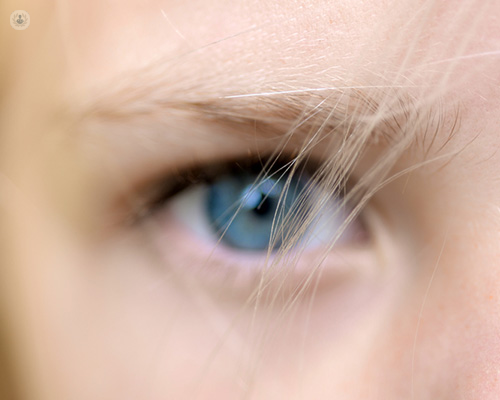What is diabetic retinopathy?
Autore:The retina is the inside layer of the eye and the most important part for transmitting light into vision. Diabetes affects the blood vessels in the eye and the rest of the body in two ways. One is by causing the blood vessels to close down. Blood vessels normally carry blood to various parts of the body and when they close down, the eye, like the rest of the body, responds to that by creating new blood vessels. New blood vessels in the majority of the body are a good thing in that circumstance but in the eye, they are not such a good thing because they are more likely to bleed. The eye needs clarity in the middle to allow light to transmit to it.
The second way is that it causes the blood vessels to leak. Leaking from the blood vessels can damage the retina which, as mentioned, is the inside part of the eye that is responsible for transmitting light into vision. This can significantly affect vision.

What are the symptoms?
Diabetic retinopathy can be a very, very slow-moving insidious condition. As it develops and progresses so slowly the changes that might occur happen over a long period of time and there may be no symptoms at all. Certainly, as the disease gets worse it can eventually lead to poor vision.
However, in the majority of cases with diabetic retinopathy, there are usually no symptoms that the patient may perceive, certainly in the earlier stage of the disease. As the disease gets worse, the symptoms and diabetic retinopathy get worse and the patient may actually lose vision in that eye. Sometimes irreversibly. For the majority of the disease process, the patient may not have any symptoms or any affected vision, patients may be unaware of the fact that they have diabetic retinopathy. Therefore, it is very important that they get seen regularly by an eye specialist (ophthalmologist) to monitor the disease process in their eye.
How is diabetic retinopathy treated?
Due to the wide spectrum of features of diabetic retinopathy, there are different treatments that can be offered. If the disease is primarily due to new blood vessels growing in the retina then it needs to be dealt with by laser. The cause of the new blood vessels growing in the eye is usually due to the blood vessels in the retina closing down, which leads to factors being released that cause new blood vessels to grow.
In this case, we apply laser to part the retina in order to reduce or dampen down the eye’s drive to create new blood vessels. That laser is usually done on a slit-lamp machine or with you lying down on a bed. It can take two or three sessions and it can be a little bit uncomfortable. After that, it usually requires no further treatment. The aim of the laser is to reduce the eyes' drive to create those new blood vessels.
However, the other aspect of diabetic retinopathy can be due to the leakage of blood vessels in the macula. The macula is the central part of the retina that's important for detailed vision. If the blood vessel leaks, particularly in the macula, then it can affect your vision significantly. The old treatment for that used to be a different type of laser but this is rarely done now. The mainstay of treatment for diabetic leakage in the macula (diabetic macular oedema) is injections into the eye to reduce the drivers that caused the leakage of the blood vessels in this area. Very rarely we may alternatively advise on some gentle laser on that area, but this is becoming less and less common.
Now, the injections in the eye can sound horrific, but we do many, many thousands of these per year, which are never quite as horrific as people anticipate. This involves lying on a bed and a few drops being placed on the eye to numb it, some cleaning fluid around the eye, and a little clip in the eyelids to keep them open whilst the injection takes no more than five or six seconds. Most people say this is not as horrific as they had initially anticipated. You may need a number of injections over a couple of years to completely dampen down oedema or the swelling in the macula.


